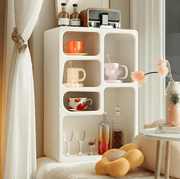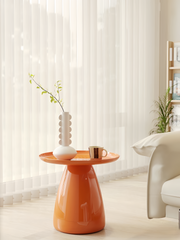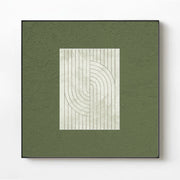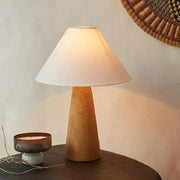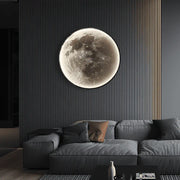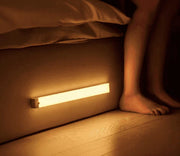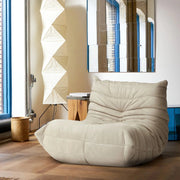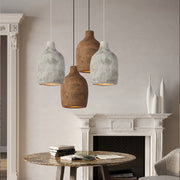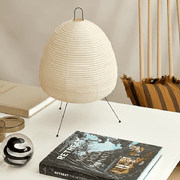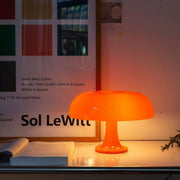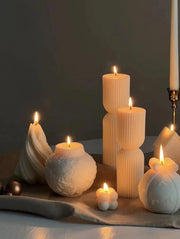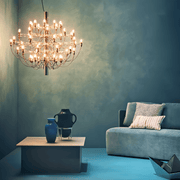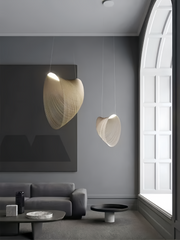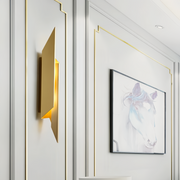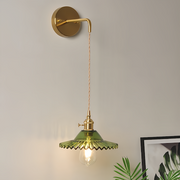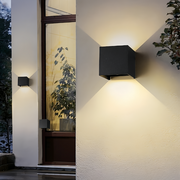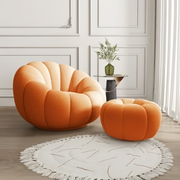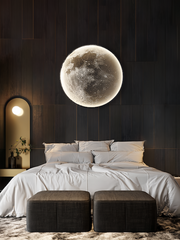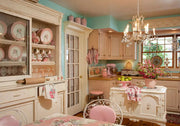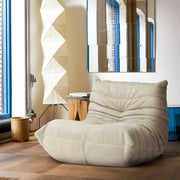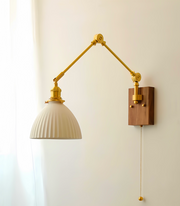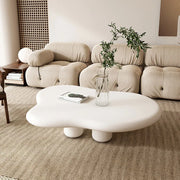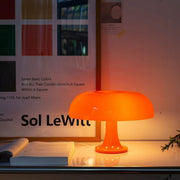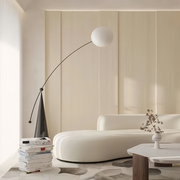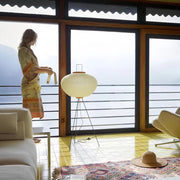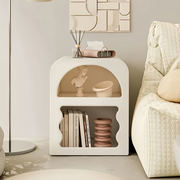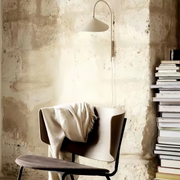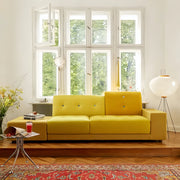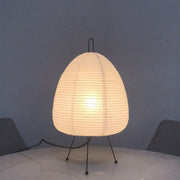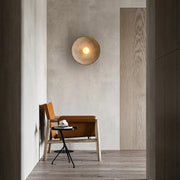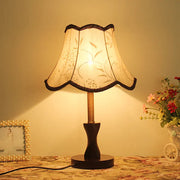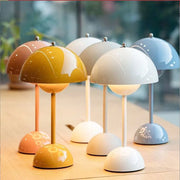Light fixtures can do more than illuminate living spaces; they can elevate design styles and add a sense of warmth and cosiness. Whether you're looking for a sleek, contemporary design or a classic arc floor lamp, there's something to suit every taste.
Layering lighting in your living room creates the perfect atmosphere for entertaining, relaxing, and everything in between. Learn how to incorporate lighting ideas into your home with this handy guide.
Arrange Lighting in the Right Way
Lighting is often overlooked in a living room, but it can make the biggest difference to both the function and feel of the space. Whether it’s a gorgeous chandelier to illuminate a coffered ceiling or a simple flush mount to bring a streamlined style to smaller rooms, the right living room lighting ideas will make a big impact on your overall decor scheme.
The key to a successful living room lighting plan is layering—using multiple types of lights to create different illumination levels and atmospheres for the different uses of the space. You want your living room to be warm and welcoming for relaxing evenings, bright enough for working, and in the right mood for entertaining. The best way to achieve this is by creating a combination of ambient, task, and accent lighting.
Ambient lighting comes from the central light fixture or fixtures in a space, and it illuminates the majority of the room. To add extra ambient lighting, opt for wall sconces on the sides of seating arrangements or in room corners. “These provide additional ambient lighting that’s fairly confined to the area near the wall, as well as act as decor pieces,” says Gupta.
Task lighting illuminates work surfaces like desks, laptops, or tablets to help with working or reading. This can be accomplished with lamps, but also by placing a floor or standing lamp directly next to an armchair. Alternatively, a table lamp with a classic empire-shaped shade can reflect light off the top and bottom of the shade and spread it out more below.
Accent lighting highlights architectural features and important objects, such as artwork. This can be done with built-in picture lights on a coffered ceiling or by back-lighting open shelving to highlight decorative items. A lighted planter on the dining room table is another great way to add a pop of colour and sculptural interest.
If you’d rather not deal with the hassle of installing your own lighting, consider smart LED bulbs that can be controlled remotely from your phone or voice assistant (such as Amazon Alexa). These don’t produce any heat and are long-lasting, so they’re a cost-effective and energy-efficient choice for most homes.
Choose the Right Light for the Right Function
Lighting is often overlooked as a key design element, but it’s an interior designer’s secret weapon for playing up a room’s style and ambiance. Whether your living room is all about relaxing in front of the TV or is a more social hub for entertaining friends and family, it’s essential that you consider how you use the space and then choose lighting accordingly.
Layering your living room's lighting scheme with ambient, task, and accent lighting will ensure the space is properly lit for all the activities you’ll do there. Starting with a base level of ambience lighting will help to illuminate the room and eliminate unflattering shadows, while accent lights can highlight particular features or create a focal point to draw the eye. Installing dimmer switches will also allow you to change the mood of the room throughout the day.
Ambient lighting is typically provided by ceiling or recessed fixtures, while wall sconces and lamps can help to create a soft glow in more decorative styles. These types of lighting are a good option for open-plan living spaces, where the light can be directed at specific areas as needed.
In more modern living rooms, floor lamps can add a touch of drama to the space. They can help to define a cosy nook or draw attention to an architectural feature, while their sculptural designs and unusual shapes can make them a focal point in the room. They’re especially popular in monochrome schemes, where their subtle tones can easily blend in and complement other colours in the room.
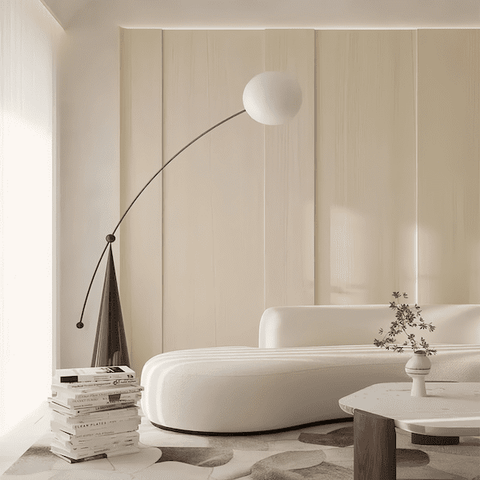
Similarly, wall lights can be used to create a more contemporary feel in the space and can be an excellent way to highlight a painting or sculpture. They are easy to install and can create a sense of depth by focusing pools of light into a narrower area than a standard ceiling light. They can also be a great way to zone off larger spaces and keep smaller ones feeling more streamlined.
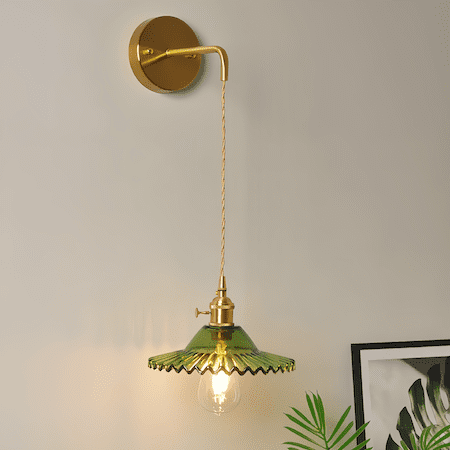
If you’re looking for a simple and easy way to update your living room, it’s worth considering adding some pendant lighting. These hanging lights can provide a focal point for the room and are ideal for lighting a dining table or kitchen island. They’re also available in a wide range of finishes, so you can match them to other furniture and decor for a unified look.
Consider the Atmosphere of the Room
As the most social space in the home, the living room is likely to be used for a wide range of activities. From watching TV and playing games to reading and crafting, a well-considered lighting scheme can support the many moods of this versatile space. The key is to layer the different types of lighting, combining ambient, task, and decorative. By doing so, you can achieve the best results with your living room lighting ideas.
Ambient lighting can be provided by fixtures that hang above the sofa, such as pendant lights or chandeliers. This type of light will reflect off surfaces below it, filling the room with soft, diffused light. While pendant lights have become a popular addition to modern living rooms, they can also be incorporated into a more traditional space as an alternative to a table lamp.
The next layer of lighting is the task layer, which provides focused light for activities like reading or working on a craft project. This type of light can be supplied by floor or table lamps. Alternatively, picture lights and sconces are designed to illuminate artwork or family photographs. They can even be used to highlight an architectural feature, such as a niche or alcove.
A good choice of bulb is essential when creating a functional and attractive lighting scheme. Look for bulbs with a high CRI (Colour Rendering Index), which means they are able to display the colours of objects accurately. You can also choose dimmable options, which give you the flexibility to adjust your light level to the mood of the room as needed.
If you’re looking to add a finishing touch to your lighting scheme, consider the lamp flex, or cord, that runs to each socket. This can be a great way to add a pop of colour or pattern to a neutral space or to tie your lighting into your furniture choices. For example, choosing a lamp in the same shade as a hero piece of furniture, such as a statement ottoman, can really pull your room together.
Add Accent Lighting
Adding accent lighting to your living room can really elevate the overall look of the space. This type of light can help draw attention to wall art, family photos, or unique architectural features of the home. It can also be used to highlight books on open shelving or accentuate other decor pieces that are in the room. This can be done using a variety of different types of lighting fixtures, from easy-to-install picture lights to LED strip lighting. For the best effect, these lights should be paired with a dimmer switch so that they can be controlled easily and adjusted depending on the mood or occasion.
The most common way to add accent lighting to a living room is by using table lamps. This is a great option for those who do not have the ceiling space to hang a pendant light or a chandelier but still want some added ambience. Choosing a lamp with a similar style of shade to those used throughout the rest of the room can create a cohesive look. For example, Orangme has a pair of clear glass table lamps that match in both shape and shade, creating a clean, polished look for the space.
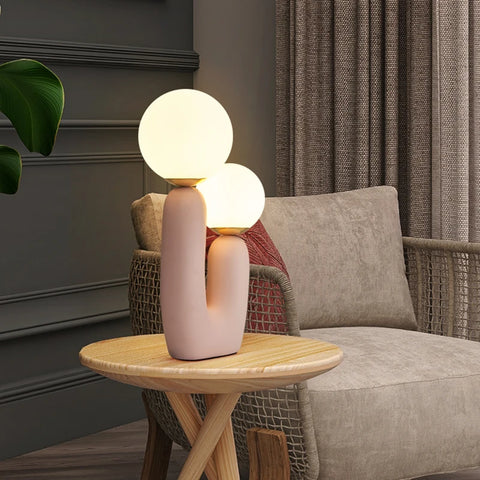
Another great way to add accent lighting is by incorporating ceiling fans. These can be particularly helpful for those with higher ceilings, as they will illuminate more of the space. However, it is important to keep in mind that ceiling fans tend to produce some hot spots in certain areas of the room.
Accent lighting can also be provided by using some wall sconces. These can be highly decorative and often feature beautiful tiffany-stained glass that illuminates with gorgeous colours when the lamps are switched on. They can also be a simple and inexpensive way to break up a flat wall surface and provide some ambient light in the process.
In addition to these more common types of accent lighting, there are many other possibilities to consider. For example, LED strip lighting can be used to highlight unique design elements of a living room, such as a coffered ceiling, or even to illuminate the underside of a console for a more invigorated feel. This type of lighting can also be used to reduce eyestrain when watching a TV or computer screen by illuminating the back of the monitor with a strip of light.



